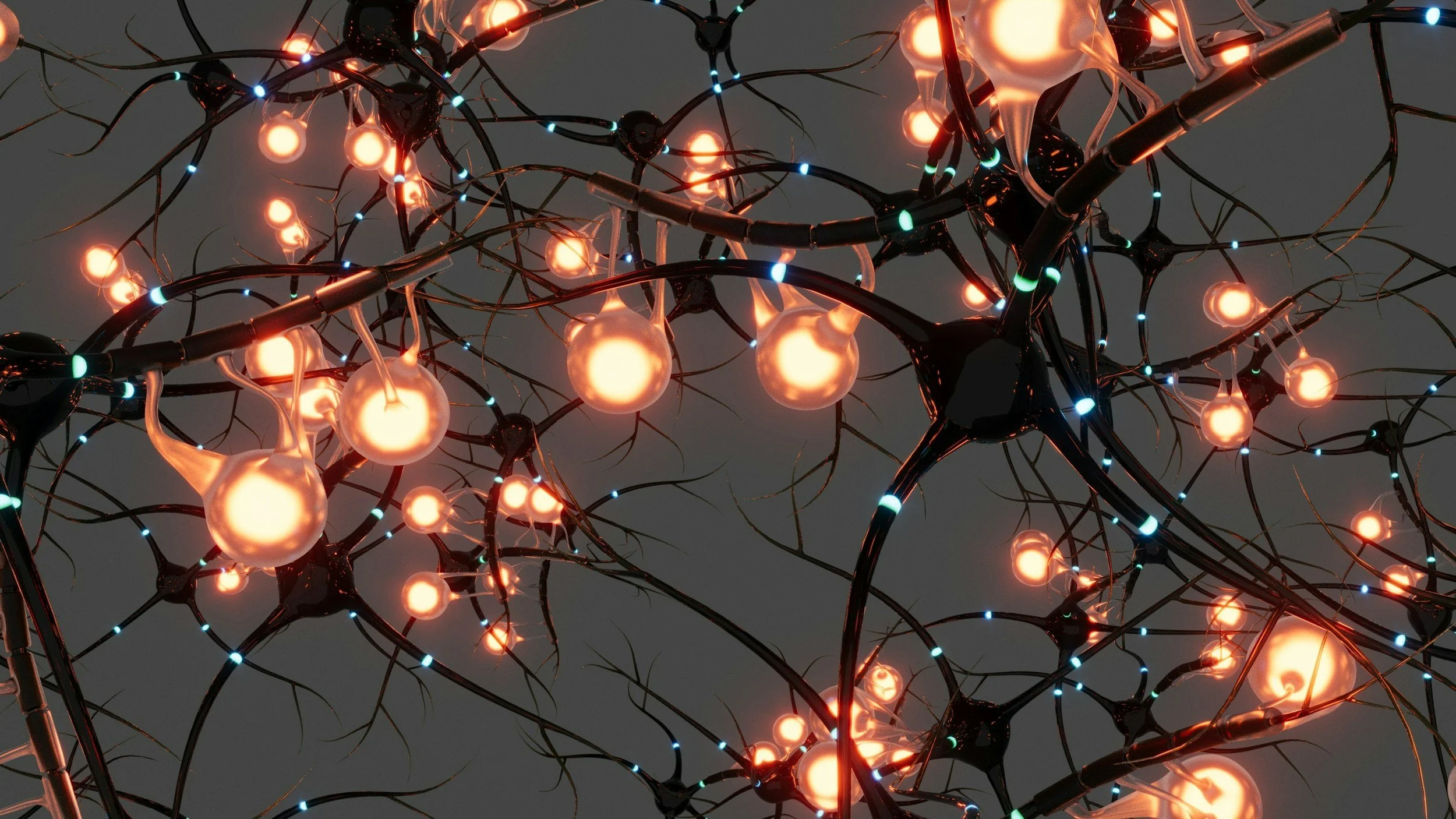The Neuroscience of Burnout: How It Affects Your Brain & Body
Burnout has become a buzzword in modern workplaces, particularly in healthcare, where chronic stress and emotional exhaustion are alarmingly common. But what does burnout actually do to your brain and body? The neuroscience behind burnout reveals profound physiological and psychological consequences that extend beyond simple fatigue. Understanding these mechanisms is crucial for both individuals and organizations to implement effective strategies for prevention and recovery.
What is Burnout?
Burnout is a state of emotional, mental, and physical exhaustion caused by prolonged stress, particularly in work-related environments (Maslach & Leiter, 2016). The World Health Organization (WHO) recognizes burnout as an occupational phenomenon, defining it by three key dimensions:
Emotional exhaustion – Feeling depleted and drained.
Depersonalization – Increased cynicism and detachment from work.
Reduced personal accomplishment – A sense of inefficacy and failure (WHO, 2019).
Neuroscience research provides insights into how these symptoms manifest biologically, particularly in the brain and body’s stress response systems.
How Burnout Affects the Brain
1. Prefrontal Cortex Dysfunction
The prefrontal cortex (PFC) is responsible for executive functions such as decision-making, problem-solving, and emotional regulation. Chronic stress and burnout reduce the volume of the PFC, impairing cognitive flexibility, increasing impulsivity, and making it harder to regulate emotions effectively (Liston et al., 2009).
2. Amygdala Hyperactivity
The amygdala, the brain’s fear and emotion processing center, becomes overactive in individuals experiencing burnout. This hyperactivity leads to heightened emotional responses, increased anxiety, and difficulty managing stressors (Arnsten, 2009).
3. Hippocampal Shrinkage
The hippocampus, crucial for memory and learning, is particularly vulnerable to stress. Chronic burnout has been associated with hippocampal atrophy, which can result in memory difficulties, reduced concentration, and an impaired ability to retain new information (McEwen & Gianaros, 2011).
4. Neurotransmitter Imbalance
Burnout affects key neurotransmitters such as dopamine and serotonin. A prolonged stress response depletes dopamine, contributing to feelings of disengagement and anhedonia (inability to experience pleasure). Similarly, lower serotonin levels are linked to mood disorders, including depression and anxiety (Gold et al., 2015).
How Burnout Affects the Body
1. Dysregulated HPA Axis and Cortisol Overload
The hypothalamic-pituitary-adrenal (HPA) axis is the body’s primary stress response system. Under chronic stress, the HPA axis becomes dysregulated, leading to excessive or insufficient cortisol production. High cortisol levels contribute to inflammation, weakened immune function, and increased risk for cardiovascular disease (Chrousos, 2009).
2. Increased Inflammation and Immune Dysfunction
Burnout triggers systemic inflammation, increasing susceptibility to illnesses and slowing down recovery times. Chronic inflammation has been linked to autoimmune disorders, gastrointestinal issues, and neurodegenerative diseases (Slavich & Irwin, 2014).
3. Cardiovascular Risks
Prolonged stress contributes to high blood pressure, arterial plaque buildup, and an elevated risk of heart disease. A study by Melamed et al. (2016) found that individuals with severe burnout had a significantly higher likelihood of developing cardiovascular conditions.
4. Sleep Disruptions and Chronic Fatigue
Burnout is strongly associated with insomnia, fragmented sleep, and reduced REM sleep quality. Poor sleep further exacerbates cognitive impairments, emotional instability, and metabolic disturbances (Vgontzas et al., 2013).
Healing from Burnout: Science-Backed Strategies
Restoring Prefrontal Cortex Function
Practices such as mindfulness meditation and cognitive behavioral therapy (CBT) have been shown to restore PFC function by enhancing self-regulation and emotional resilience (Tang et al., 2015).
2. Calming the Amygdala
Engaging in deep breathing exercises, yoga, and progressive muscle relaxation can help downregulate the overactive amygdala, reducing stress reactivity (Taren et al., 2017).
4. Supporting the Hippocampus with Exercise
Aerobic exercise promotes neurogenesis in the hippocampus, reversing stress-induced damage and improving memory and mood (Erickson et al., 2011).
5. Regulating Neurotransmitter Levels
A nutrient-rich diet rich in omega-3s, B vitamins, and magnesium supports optimal neurotransmitter production, enhancing mood and cognitive function (Rao et al., 2008).
6. Balancing the HPA Axis
Adequate sleep, social support, and structured work-life balance policies are critical for preventing HPA axis dysregulation and fostering long-term well-being (McEwen, 2017).
Burnout is more than just feeling exhausted—it is a complex neurophysiological state that alters brain function, weakens the body, and impairs overall well-being. However, by understanding the neuroscience behind burnout, we can adopt evidence-based strategies to mitigate its effects and build resilience. Organizations must prioritize workplace wellness initiatives that promote psychological safety, autonomy, and recovery opportunities to prevent burnout and foster sustainable productivity.
Written By: Thea McDougall BHSc, CCWS Founder, Vital Narratives: Empowering Healthcare Teams through Training & Wellness. Vitalnarratives.com
References
Arnsten, A. F. T. (2009). Stress signaling pathways that impair prefrontal cortex structure and function. Nature Reviews Neuroscience, 10(6), 410-422.
Chrousos, G. P. (2009). Stress and disorders of the stress system. Nature Reviews Endocrinology, 5(7), 374-381.
Erickson, K. I., Voss, M. W., Prakash, R. S., Basak, C., Szabo, A., Chaddock, L., ... & Kramer, A. F. (2011). Exercise training increases size of hippocampus and improves memory. PNAS, 108(7), 3017-3022.
Gold, P. W., Licinio, J., Pavlatou, M. G., & Kling, M. A. (2015). Pathological mechanisms in depression: An update. Molecular Psychiatry, 20(2), 66-74.
Liston, C., McEwen, B. S., & Casey, B. J. (2009). Psychosocial stress reversibly disrupts prefrontal processing and attentional control. PNAS, 106(3), 912-917.
Maslach, C., & Leiter, M. P. (2016). Understanding the burnout experience: Recent research and its implications for psychiatry. World Psychiatry, 15(2), 103-111.
McEwen, B. S. (2017). Neurobiological and systemic effects of chronic stress. Neuron, 89(2), 449-460.
McEwen, B. S., & Gianaros, P. J. (2011). Stress- and allostasis-induced brain plasticity. Annual Review of Medicine, 62, 431-445.
WHO. (2019). Burn-out an "occupational phenomenon": International Classification of Diseases. World Health Organization.






